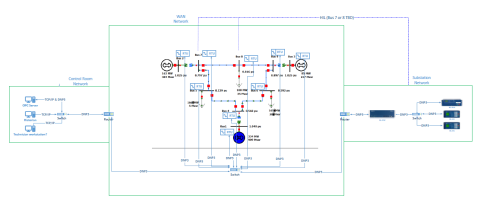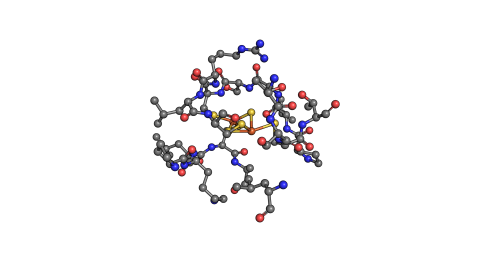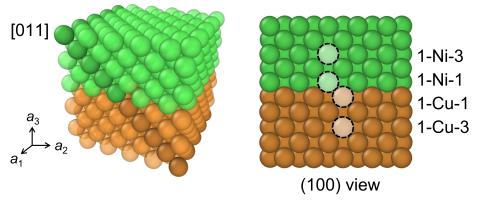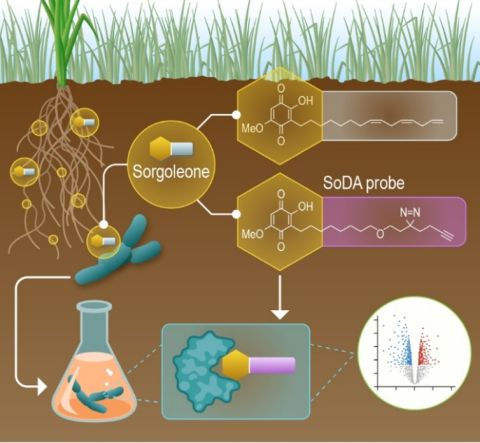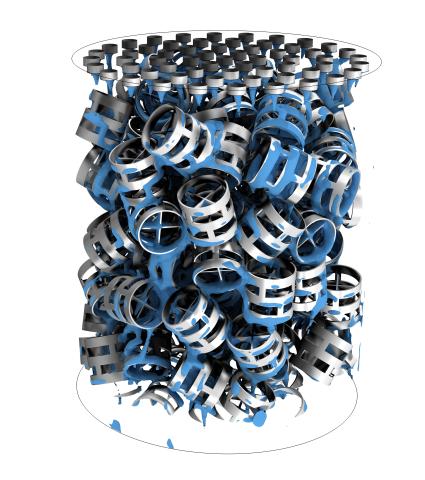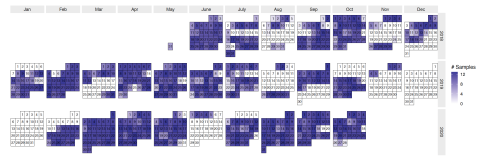Simulated x-ray absorption spectra calculated with the FEFF code for various models of Cu incorporated into the iron oxide mineral hematite. The structures are drawn from publically available ab initio molecular dynamics simulations.
Filter results
Category
- Scientific Discovery (45)
- Biology (40)
- Human Health (38)
- Integrative Omics (29)
- Earth System Science (5)
- National Security (5)
- Energy Resiliency (4)
- Computational Research (3)
- Computing & Analytics (3)
- Renewable Energy (3)
- Atmospheric Science (2)
- Computational Mathematics & Statistics (2)
- Data Analytics & Machine Learning (2)
- Data Analytics & Machine Learning (2)
- Chemical & Biological Signatures Science (1)
- Coastal Science (1)
- Computational Mathematics & Statistics (1)
- Cybersecurity (1)
- Distribution (1)
- Electric Grid Modernization (1)
- Energy Efficiency (1)
- Energy Storage (1)
- Grid Analytics (1)
- Grid Cybersecurity (1)
- High-Performance Computing (1)
- Microbiome Science (1)
- Solar Energy (1)
- Visual Analytics (1)
- Weapons of Mass Effect (1)
- Wind Energy (1)
Content type
Dataset Type
- (-) Proteomics (39)
- (-) Simulation Results (17)
- (-) ChIP-seq (2)
- Omics (86)
- Transcriptomics (51)
- Sequencing (39)
- Metabolomics (28)
- Lipidomics (26)
- Amplicon (16S, ITS) (15)
- Metagenomics (9)
- Microarray (9)
- Genomics (4)
- Computed Analysis (3)
- Geospacial (2)
- Staff (2)
- Cybersecurity (1)
- Electromagnetic Spectrum (1)
- Mass Spectra (1)
- Microscopy (1)
- Phenomics (1)
- Whole genome sequencing (WGS) (1)
Tags
- Virology (35)
- Immune Response (26)
- Time Sampled Measurement Datasets (26)
- Mass spectrometry data (25)
- Differential Expression Analysis (24)
- Multi-Omics (23)
- Gene expression profile data (20)
- Homo sapiens (18)
- MERS-CoV (12)
- Health (8)
- Mus musculus (8)
- Virus (8)
- Viruses (8)
- Influenza A (7)
- West Nile virus (5)
- Ebola (2)
- Epigenetics (2)
- Machine Learning (2)
- Proteomics (2)
- Resource Metadata (2)
- Cybersecurity (1)
- EBC (1)
- High-Performance Computing (1)
- Mass Spectrometry (1)
- Microscopy (1)
- MultiSector Dynamics (1)
- Output Databases (1)
- Quantification (1)
- Synthetic (1)
- TMT (1)
This dataset includes one baseline and three cybersecurity based scenarios utilizing the IEEE 9 Bus Model. This instantiation of the IEEE 9 model was built utilizing the OpalRT Simulator ePhasorsim module, with Bus 7 represented by hardware in the loop (HiL). The HiL was represented by two SEL351s...
A pre-trained convolutional neural network was fine-tuned for three separate classification tasks, distinguishing 2D images of: 1) single amino acids, 2) protein structural ball and stick images of metalloproteins, and 3) protein structural ball and stick images of metalloenzymes with the metal...
ProxyTSPRD profiles are collected using NVIDIA Nsight Systems version 2020.3.2.6-87e152c and capture computational patterns from training deep learning-based time-series proxy-applications on four different levels: models (Long short-term Memory and Convolutional Neural Network), DL frameworks...
Cu-Ni bilayers either without defects (pristine) or with a single vacancy in the nickel layer at the interface (1-Ni-1), in the copper layer at the interface (1-Cu-1), in the central nickel layer (1-Ni-3), or in the central copper layer (1-Cu-3) were relaxed under the application of shear in the...
A trained neural net potential (NNP) was use to simulate shear in the [011] direction in Cu-Ni multilayers. We applied the NNP to a Monte Carlo scheme to generate parallel shear simulations, demonstrating the range of possible trajectories that can be obtained due to speedups provided by the NNP...
Last updated on 2024-04-19T19:12:08+00:00 by LN Anderson PerCon SFA: Profiling sorghum-microbe interactions with a specialized photoaffinity probe identifies key sorgoleone binders in Acinetobacter pitti Mass spectrometry-based global proteome analysis and SoDA-PAL photoaffinity probe labeled...
CO2 Capture CFD (C3FD) dataset contains STAR-CCM+ simulations of a CO2-capturing solvent flowing across packing structures in a column. This dataset contains 50 2D and 50 3D simulations, each of which spans 500 timesteps. The 2D and 3D simulation meshes have 150,073 and 3,129,815 nodes, respectively...
As energy prices rise and climate change brings more extreme and frequent days of heating and cooling, households must allocate more of their income to energy bills, increasing their energy burden. Many strategies are employed to alleviate high energy burden, such as weatherization, energy...
Category
A total of 172 children from the DAISY study with multiple plasma samples collected over time, with up to 23 years of follow-up, were characterized via proteomics analysis. Of the children there were 40 controls and 132 cases. All 132 cases had measurements across time relative to IA. Sampling was...
Supporting data and code uploaded to DataHub for "How do the weather regimes drive wind speed and power production at the sub-seasonal to seasonal timescales over the CONUS?" Created by Ye Liu*, Sha Feng*, Yun Qian, Berg K Larry, Huilin Huang *POC: Ye Liu, Ye.Liu@pnnl.gov Sha Feng, sfeng@pnnl.gov --...
Category
Federal and state decarbonization goals have led to numerous financial incentives and policies designed to increase access and adoption of renewable energy systems. In combination with the declining cost of both solar photovoltaic and battery energy storage systems and rising electric utility rates...
Category
Comprised of 6,426 sample runs, The Environmental Determinants of Diabetes in the Young (TEDDY) proteomics validation study constitutes one of the largest targeted proteomics studies in the literature to date. Making quality control (QC) and donor sample data available to researchers aligns with...


